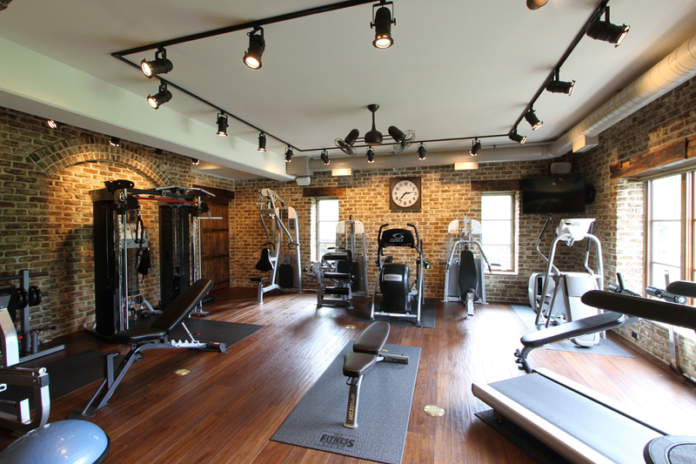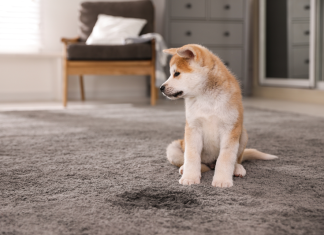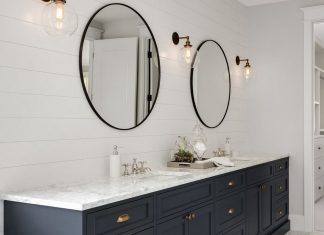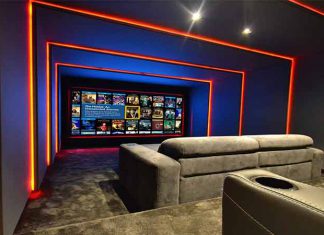Your guide to pumping iron without blowing a fuse, or freezing in the winter
Turning your garage into a home gym is one of the smartest moves you can make. It’s convenient, private, and honestly, kind of a flex. But if you’re lifting in the dark, sweating next to a single oscillating fan, or running your treadmill off a power strip from 1997, it is definitely time for a glow-up.
Here’s how to upgrade your garage gym with lighting, power, and climate control that actually works, without risking your safety, burning out your gear, or burning down your house.
Let There Be (Good) Light
Forget the single, flickering overhead bulb. Your garage gym deserves lighting that makes you want to show up, and maybe even flex in the mirror a little.
- Install LED shop lights or high-output fixtures. They’re bright, energy-efficient, and don’t buzz like angry wasps.
- Choose daylight-balanced LEDs (around 5000K). These are known for clean, motivating light. It’s easier on the eyes and great for visibility during those early morning sessions. Trust me, nothing is worse than going in for a 4:30 AM workout only to have your retinas burned alive by the craziest LEDs you’ve ever seen.
- Consider motion sensor lights for convenience. Walk in, lights on. No switches needed when your hands are full of pre-workout, your phone controlling your workout mix, and determination.
- Accent lighting, like LED strips under shelves or mirrors, adds personality. Not only do these just look awesome but you can even sync them with music if you’re going for nightclub-meets-gains.
Safety tip: If you’re adding multiple new fixtures or hardwiring anything, it’s smart to talk to a licensed Idaho Falls electrician. Messing with garage wiring can get tricky, especially in older homes.
Power Up: Outlets for Equipment That Works as Hard as You Do
Treadmills, ellipticals, rowing machines, sound systems, it adds up fast. And not just in calories burned.
- Heavy equipment often needs dedicated circuits. This is especially true for treadmills or high-end machines with digital screens or built-in fans. Check the manufacturer’s specs before plugging into just any outlet.
- Avoid extension cords for permanent setups. They’re not built for long-term use and can overheat under load.
- Add GFCI outlets, especially if your garage is prone to moisture. It’s code in most areas, and more importantly, it can prevent dangerous shocks. You want to tingle from your pre-workout, not electricity.
- Want to wall-mount a TV or sound system? Have an outlet installed behind the mount for a clean, cord-free look.
Good rule of thumb: If you’re adding more than one or two outlets, or your breaker panel looks like a mystery box from a haunted house, call an Idaho Falls electrician.
Keep Your Cool (or Warm): Fans and Heaters Done Right
Garages aren’t exactly known for their perfect climate control. For those outside the state of California, I bet your garage is either hotter than the Sahara, or colder than the Arctic in some months. For those of us who live in special states, we get to freeze half the year, cook the other half and then get a few days when our garage gym is perfect. However, with a few upgrades, you can train in comfort year-round.
Fans:
- Install a ceiling fan or wall-mounted high-velocity fan to keep the air moving. It’s way more effective than a box fan on the floor.
- Need to stay cooler in the summer? Consider a mini split A/C system if your workouts are suffering from sauna-level temps.
- Some fans pull serious amps, especially industrial models. Don’t just plug and pray. Check wattage and circuit capacity.
Heaters:
- Infrared or wall-mounted electric heaters are great for winter months. These are life savers for garage gyms, especially if you live in a cold climate.
- Portable space heaters? Not ideal. They’re often inefficient, easy to trip, and can be a fire hazard.
- Hardwired heating systems offer more reliable warmth. However, these must be installed properly. This is one of those “definitely don’t DIY” projects.
Safety reminder: Heating and cooling systems often need their own circuit or higher-voltage lines. A professional installer (or licensed electrician) will make sure it’s safe, code-compliant, and doesn’t set off your smoke alarm mid-set.
Thinking Bigger? Plan Your Power Like a Pro
If you’re envisioning a full setup, lighting, outlets, fans, heaters, sound system, maybe even a smart mirror, you’ll want to evaluate your garage’s existing electrical panel. In many homes, garages run off a single 15-amp circuit. That won’t cut it for a serious gym.
- A pro can help you add a subpanel, upgrade circuits, or even install backup power if you want uninterrupted workouts during storms.
Final Reps
Your garage gym should be strong, smart, and safe. Upgrading the lighting and power isn’t just about looks, it’s about performance, comfort, and peace of mind. Take the time to plan it right, call in expert help where needed, and your iron paradise will be lifting with you for years to come.
Now crank that music, flip those switches, and get to work. You’ve got gains to chase.














